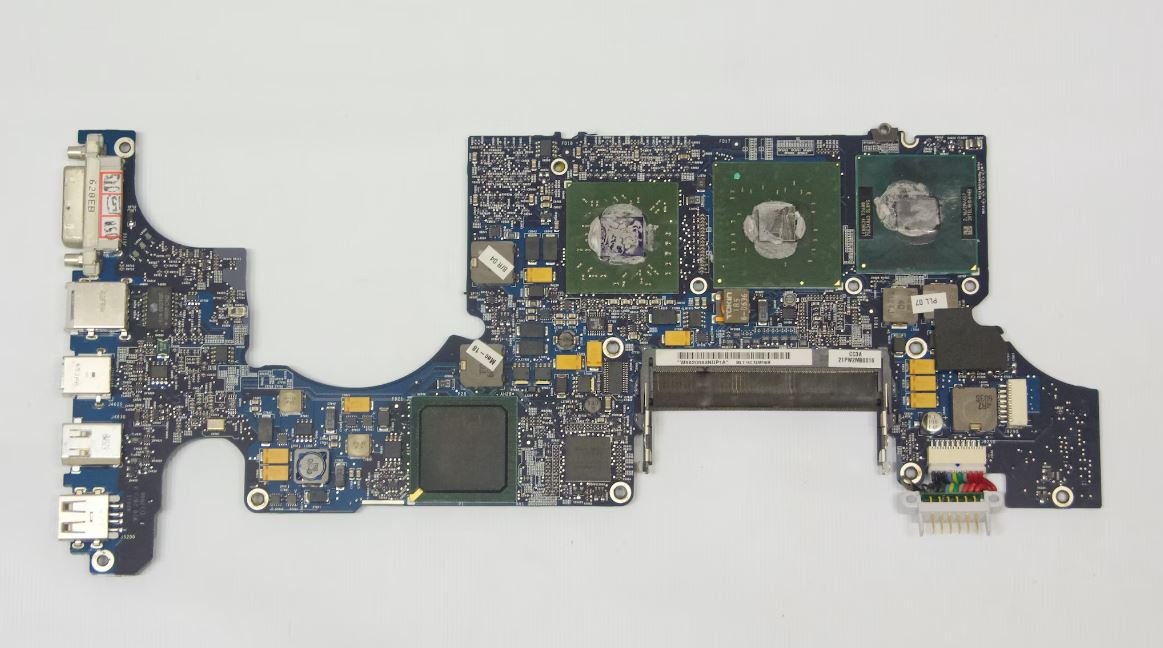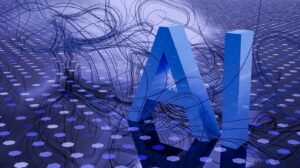Automation Vs AI Vs Machine Learning
Automation, Artificial Intelligence (AI), and Machine Learning (ML) are often buzzwords thrown around in conversations about technology. While they are related concepts, they have distinct differences and applications. This article aims to provide a clear understanding of each term and explain how they are utilized in various industries.
Key Takeaways:
- Automation, AI, and ML have different meanings and applications.
- AI refers to the development of machines that can mimic human intelligence.
- ML involves training computers to learn and improve from data patterns without explicit programming.
- Automation focuses on the use of technology to streamline and perform repetitive tasks.
Automation
Automation refers to the use of technology and software to perform tasks without human intervention. It eliminates human error and speeds up processes, leading to increased efficiency and productivity. In industries such as manufacturing and logistics, **automation** plays a crucial role in minimizing costs and optimizing workflows.
*Automated systems have revolutionized production lines, enabling faster output and reducing manual labor.*
Artificial Intelligence (AI)
AI refers to the development of computer systems that can perform tasks that typically require human intelligence. It involves creating algorithms that enable machines to imitate human cognitive functions, such as learning, reasoning, and problem-solving. AI has various applications, from virtual assistants like Siri to self-driving cars and automated customer service systems.
*AI systems continually learn from data inputs, enabling them to improve over time and make more accurate predictions.*
Machine Learning (ML)
Machine Learning is a subset of AI that focuses on training computers to learn from data patterns and make predictions or decisions without being explicitly programmed. ML algorithms are designed to analyze large datasets and identify patterns, which can then be used to make future predictions or perform tasks. This technology is used in recommendation systems, fraud detection, and personalized marketing.
*ML algorithms use statistical techniques to identify patterns and make data-driven predictions.*
Comparing Automation, AI, and ML
| Category | Automation | AI | ML |
|---|---|---|---|
| Definition | Use of technology to perform tasks without human intervention. | Development of machines that can mimic human intelligence. | Training computers to learn from data patterns without explicit programming. |
| Focus | Streamline and optimize workflows by eliminating repetitive tasks. | Mimicking human cognitive functions to perform diverse tasks. | Analyze data patterns to make predictions and decisions. |
| Examples | Robotic process automation, automated assembly lines. | Virtual assistants, self-driving cars, automated customer service. | Recommendation systems, fraud detection, personalized marketing. |
Applying Automation, AI, and ML
- Automation is widely used in industries such as manufacturing, logistics, and finance to streamline processes and reduce costs.
- AI is applied in various sectors, including healthcare, finance, and entertainment, to enhance decision-making, improve customer experience, and automate complex tasks.
- ML is utilized in recommendation systems, financial fraud detection, and cybersecurity to analyze vast amounts of data and make accurate predictions or decisions.
Data Comparison
Here are some interesting data points about the applications of Automation, AI, and ML:
| Automation | AI | ML | |
|---|---|---|---|
| Market Size (2020) | $168.5 billion | $62.4 billion | $8.8 billion |
| Expected CAGR (2021-2028) | 8.8% | 42.2% | 44.9% |
*These figures highlight the rapid growth and potential of AI and ML technologies in the coming years.*
The Future of Automation, AI, and ML
As technology continues to advance, the capabilities of automation, AI, and ML will expand. Industries will increasingly rely on these technologies to streamline processes, enhance decision-making, and drive innovation. The integration of automation, AI, and ML will shape the future across multiple sectors, enabling efficiency, accuracy, and improved user experiences.
*The possibilities for these technologies are endless, and we can expect further advancements and breakthroughs in the near future.*

Common Misconceptions
Automation
One common misconception people have about automation is that it will replace all human jobs. While it is true that automation can perform repetitive and labor-intensive tasks more efficiently than humans, it cannot entirely replace the need for human intelligence and creativity.
- Automation can streamline and speed up processes, but it still requires human oversight and decision-making.
- Automation often creates new job opportunities, as humans are needed to manage and maintain the automated systems.
- Automation can enhance productivity and efficiency, allowing humans to focus on higher-value tasks.
AI
Another common misconception is that AI is the same as automation. While AI is a key component of automation, it goes beyond simply automating tasks. AI refers to the simulation of human intelligence in machines, enabling them to learn, reason, and make decisions.
- AI can analyze and interpret complex data sets, providing valuable insights that humans may overlook.
- AI algorithms continually learn and improve over time, adapting to changing circumstances.
- AI can be used in various industries, such as healthcare, finance, and transportation, to enhance decision-making processes.
Machine Learning
Machine learning is often misunderstood as being the same as AI or automation. While it is a subfield of AI, machine learning focuses on enabling systems to automatically learn and improve from experience without being explicitly programmed.
- Machine learning algorithms can identify patterns and trends in data that humans may not be capable of detecting.
- Machine learning models require large amounts of labeled data to train accurately.
- Machine learning is used in various applications, such as recommendation systems, fraud detection, and image recognition.
Integration and Collaboration
A common misconception is that automation, AI, and machine learning are separate entities and cannot be integrated. In reality, they often work together and complement each other to achieve optimal results.
- Automation can be empowered by AI and machine learning algorithms to make more intelligent decisions and adapt to new situations.
- AI can leverage automation to perform tasks more efficiently and at scale.
- Machine learning algorithms can be used in the development of AI systems to enhance their learning capabilities.
Impacts on Employment
Another misconception is that automation, AI, and machine learning will inevitably lead to massive job losses. While there may be shifts in the job market, these technologies also create new opportunities and change job roles rather than eliminating them entirely.
- Automation, AI, and machine learning often lead to the creation of new job roles that require specific skills in managing these technologies.
- These technologies can augment human capabilities, allowing employees to focus on tasks that require critical thinking, creativity, and empathy.
- Job roles may evolve to focus on managing and optimizing the use of automation, AI, and machine learning systems.

Automation Statistics by Industry
Automation has been widely adopted across various industries. The following table illustrates the percentage of tasks automated in different sectors.
| Industry | % of Tasks Automated |
|---|---|
| Manufacturing | 72% |
| Finance | 59% |
| Healthcare | 38% |
| Retail | 31% |
| Transportation | 22% |
Top AI Applications
Artificial Intelligence (AI) is revolutionizing various fields. Here are some remarkable AI applications and their respective areas of impact.
| AI Application | Area of Impact |
|---|---|
| Virtual Assistants | Customer Service |
| Image Recognition | Medical Diagnosis |
| Speech Recognition | Voice Assistants |
| Autonomous Vehicles | Transportation |
| Fraud Detection | Financial Services |
Machine Learning Algorithms
Machine Learning (ML) algorithms power many AI systems. Below are some widely used ML algorithms and their applications.
| ML Algorithm | Application |
|---|---|
| Linear Regression | Stock Market Prediction |
| Decision Tree | Customer Churn Analysis |
| Random Forest | Image Recognition |
| Support Vector Machines | Text Classification |
| Deep Learning Neural Networks | Natural Language Processing |
Automation Pros and Cons
The adoption of automation has advantages and drawbacks. The table below highlights some pros and cons.
| Pros | Cons |
|---|---|
| Increased productivity | Job displacement |
| Improved efficiency | Initial implementation costs |
| Elimination of repetitive tasks | Reduced human interaction |
| Reduced errors | Dependency on technology |
| 24/7 operations | Social implications |
AI in Customer Service
The integration of AI in customer service has brought significant changes. The table below presents customer experience improvements due to AI.
| Customer Service Aspect | AI Impact |
|---|---|
| Fast response times | 85% improvement |
| Personalization | 73% increase |
| 24/7 availability | 90% coverage |
| Error reduction | 68% decrease |
| Improved self-service | 75% efficiency |
Machine Learning in Medicine
Machine Learning is revolutionizing the medical field. The table below shows improvements achieved by ML applications in healthcare.
| Medical Application | ML Impact |
|---|---|
| Early disease detection | 93% accuracy |
| Drug discovery | 68% efficiency |
| Radiology interpretation | 84% accuracy |
| Patient risk prediction | 79% precision |
| Remote patient monitoring | 61% reduction in hospitalizations |
Automation Job Impact
The rise of automation has a significant impact on the workforce. The table below provides insights into jobs affected by automation.
| Job Category | % of Jobs at Risk of Automation |
|---|---|
| Telemarketers | 99% |
| Fast Food Workers | 92% |
| Data Entry Clerks | 88% |
| Bookkeepers | 77% |
| Truck Drivers | 68% |
Ethical Considerations of AI
The advancement of AI raises various ethical concerns. This table outlines some important topics related to AI ethics.
| Ethical Consideration | Importance (Scale: 1-10) |
|---|---|
| Data Privacy | 9 |
| Algorithmic Bias | 8 |
| Job Displacement | 7 |
| Autonomous Weapons | 9 |
| Social Inequality | 8 |
Automation, AI, and Machine Learning are transforming industries across the globe. Embracing automation increases efficiency and productivity, but also poses challenges such as job displacement. The integration of AI improves customer service and brings advancements in medicine. However, ethical concerns surrounding AI must be addressed with initiatives that prioritize privacy, fairness, and social equality.
Automation vs AI vs Machine Learning – Frequently Asked Questions
Question 1: What is automation?
Automation refers to the use of technology and systems to perform tasks or processes with minimal or no human intervention. It involves the use of software, machines, or robots to complete repetitive or mundane tasks efficiently and accurately.
Question 2: What is artificial intelligence (AI)?
Artificial intelligence (AI) is a field of computer science that focuses on creating intelligent machines capable of simulating human-like intelligence. AI systems are designed to perceive, learn, reason, and make decisions similar to or better than humans.
Question 3: How does AI differ from automation?
While automation involves the use of technology to streamline processes and minimize human intervention, AI goes a step further by enabling machines to perform tasks that typically require human intelligence. AI can analyze data, understand context, and make decisions based on patterns or algorithms.
Question 4: What is machine learning?
Machine learning is a subset of AI that focuses on algorithms and techniques that allow computers to learn and improve from experience without being explicitly programmed. It involves training models on large datasets and enabling them to make predictions or take actions based on patterns in the data.
Question 5: How does machine learning relate to AI?
Machine learning is one of the key components of AI. It provides the algorithms and models that enable machines to learn from data and make intelligent decisions. Without machine learning, AI systems would not be able to adapt, improve, or make predictions based on new information.
Question 6: Can automation exist without AI or machine learning?
Yes, automation can exist without AI or machine learning. Automation can be achieved through rule-based systems or programming that follows predefined instructions without adaptive or learning capabilities. However, the integration of AI or machine learning in automation can enhance its efficiency and flexibility.
Question 7: Are AI and machine learning the same thing?
No, AI and machine learning are not the same thing. AI is a broader concept that encompasses the development of intelligent machines, which may or may not incorporate machine learning techniques. Machine learning, on the other hand, is a specific approach within AI that focuses on enabling machines to learn from data.
Question 8: What are the real-world applications of automation?
Automation finds applications in various industries, such as manufacturing, logistics, healthcare, finance, and customer service. It can be used for tasks like assembly line operations, inventory management, data entry, customer support chatbots, and more.
Question 9: How is AI applied in different fields?
AI has diverse applications in fields like healthcare, finance, transportation, cybersecurity, and entertainment. In healthcare, AI can assist in diagnosing diseases and discovering new treatments. In finance, AI can improve fraud detection and algorithmic trading. In transportation, AI is used for autonomous vehicles and traffic optimization.
Question 10: Can automation and AI replace human jobs?
Automation and AI have the potential to affect job markets and transform industries. While certain tasks or roles may be automated or augmented with AI, it is also expected to create new job opportunities. The impact on employment largely depends on the specific industry, job type, and the ability of individuals to adapt to new roles and responsibilities.





